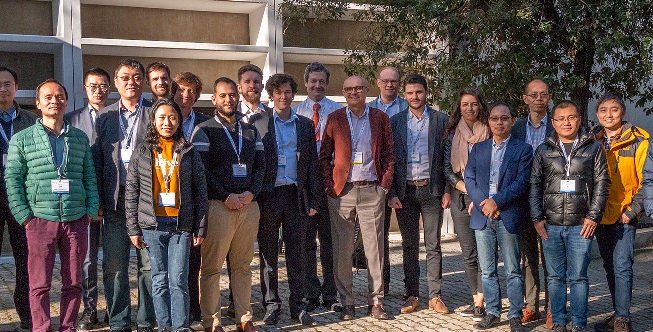Standards save lives: European Standardization in support of eCall
Road traffic accidents are an unfortunate consequence of road transport. In an ever more digitalised and connected society, ITS supports road safety through automated and real-time communication between vehicles and emergency services. Known as 112-eCall, this communication is already saving lives. eCall puts the occupants of the vehicle in direct communication with the emergency services and automatically provides the location of the accident, the vehicle involved, the numbers of passengers in a vehicle at the time of impact, and other key data, which enables the prompt and most appropriate emergency response. Understanding the content of a vehicle can help the emergency services send appropriate resources and minimise risks and disruption for road users. The benefits of this technology are widely acknowledged, but they can only be ensured by proper standardization. The relevant public and private actors have been working together and the development of appropriate CEN standards has already enabled the mandatory equipping of all new models of cars and light vans. Furthermore, eCall standards specifications are now also available for every other category of vehicle, enabling these to be implemented on a voluntary basis, or on mandated use where regulators deem this appropriate in order to reduce deaths and injuries.
Co-existence with third party assistance providers is also enabled through CEN standardization. This challenging topic will truly improve the survivability of all European road users, should they unfortunately be involved in a road traffic accident/emergency. To know more about eCall standardization, you can read the leaflet CEN and CENELEC recently published at this link.
The European Commission endorsed the joint toolbox of mitigating measures agreed by EU Member States to address security risks related to the rollout of 5G, the fifth-generation of mobile networks. This follows the European Council's call for a concerted approach to the security of 5G and the ensuing Commission Recommendation of March 2019. Member States have since identified risks and vulnerabilities at national level and published a joint EU risk assessment. Through the toolbox, the Member States are committing to move forward in a joint manner based on an objective assessment of identified risks and proportionate mitigating measures. With its Communication adopted, the Commission is launching relevant actions within its competence and is calling for key measures to be put in place by 30 April 2020.
ETSI announced the launch of a new group dedicated to specifying the fifth generation of Fixed Network (ETSI ISG F5G). In a launch via an online press and industry briefing yesterday, various speakers expressed their view on the need for standardization in this area. We are entering an exciting new era of communications, and fixed networks play an essential role in that evolution alongside and in cooperation with mobile networks. Building on previous generations of fixed networks, the 5th generation will address three main use cases, a full-fiber connection, enhanced fixed broadband and a guaranteed reliable experience.
For home scenarios, emerging services such as Cloud VR (virtual reality) and AR (augmented reality) video streaming or online gaming introduce the necessity for ultra-broadband, extremely low latency and zero packet loss. Business scenarios such as enterprise Cloudification, leased line, or POL (Passive Optical LAN) require high reliability and high security. Other industry sectors have specific requirements on the deployment of fiber infrastructures including environmental conditions such as humidity, temperature or electromagnetic interference.
ETSI Issues Two Major Standards for Emergency Calls: Next Generation 112 and Advanced Mobile Location
ETSI’s Emergency Communication Special Committee has recently released two major specifications, ETSI TS 103 479, for NG112, the next generation of European emergency services and ETSI TS 103 625, for the specific Advanced Mobile Location function. AML is already implemented in 22 countries worldwide following the publication of the first ETSI technical report TR 103 393.
NEXT GENERATION OF EMERGENCY CALLS: ETSI TS 103 479 specifies the core elements of the architecture for network independent access to emergency services, enabling interoperability of implementation for the Next Generation access to emergency services. Next Generation 112 (NG112) architecture enables multimedia communications (text, video, together with location or additional data) which is not possible on the current phone-based system. This will benefit citizens in emergency situations as well as emergency responders, network providers and other stakeholders.
ADVANCED MOBILE LOCATION: As more than 70% of emergency calls come from a mobile phone in Europe, the Advanced Mobile Location (AML) technology is essential to provide the most accurate location of the caller. With AML the phone's location capabilities (making use of GNSS, WIFI and cellular network information) are activated when an emergency number is dialed. The location obtained is then sent to a location endpoint managed by, or on behalf of, a national emergency service. These technologies can provide a location precision as good as 5m outdoors (and averaging to within circular areas of ~25 m radius for indoor locations), a significant improvement on existing cell coverage provided by mobile networks, which average (across the UK as an example) circular areas of about 1,75 km radius.
The ETSI Technical Committee on Electronic Signatures and Infrastructures (TC ESI) is pleased to release the ETSI TR 103684 technical report. This report addresses existing trust service infrastructures that operate in different regions of the world and their possible mutual recognition/global acceptance. The report identifies ways to facilitate cross recognition between EU trust services and trust services from other schemes. The trust services are based on ETSI standards and support the eIDAS Regulation (EU) No 910/2014.
ETSI TR 103 684 concentrates on existing PKI-based trust services, the most prevalent across the world. The study analyzed 37 global, sector and national public key infrastructure schemes and involved workshops held in 4 regions of the world in Dubai, Tokyo, Mexico City and New York. The methodology covered four main elements of a trust service: legal context, supervision and audit, technical standards, and trust representation. The study highlighted a strong interest with achieving mutual recognition of trust services with the EU in all the regions of the world visited.










